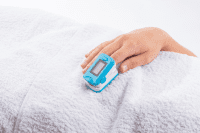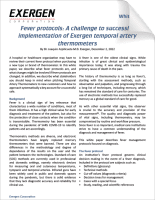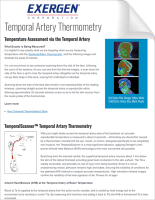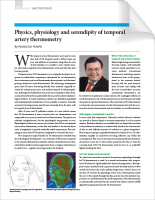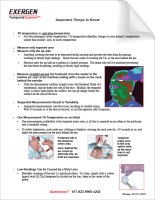This article is sponsored content supplied to American Nurse Journal by Michigan State University College of Nursing, East Lansing, MI, and is not peer reviewed.
We’ve all heard this excuse before: “That’s the way it’s always been done.”
But in the world of healthcare, that explanation won’t cut it anymore.
For too long, many practitioners have followed decades- or even centuries-old practices in the name of reimbursement. Slowly but surely, however, the shift to an outcomes-based system is happening, and nursing education programs are aiming to get out in front of the change.
One such example is the Michigan State University (MSU) College of Nursing in East Lansing, MI, where recent changes have moved evidence-based practice to the forefront of the curriculum. It’s no longer enough to simply participate in academic exercises—today’s MSU students are identifying and solving real-world problems observed during their clinical rotations.
“When I meet somebody who works at one of these facilities, they’ll tell me what our students are accomplishing,” said Randolph Rasch, PhD, RN, FNP, FAANP, dean and professor at the MSU College of Nursing. “It’s exciting to hear about the outcomes.”
The Shift to Outcomes and Nursing’s Role
Before insurance became a big factor in the U.S. healthcare system, a trip to the doctor was similar to other business transactions. Patients made appointments, saw the provider, and paid for the service. As insurance took greater hold, those patients became less and less aware of the financial side of the system.
The idea behind an outcomes-based system would see providers paid as patients reach goals or show noted improvements in their conditions, rather than being paid each time they see the patient.
Regardless of the system in place, the emphasis within nursing has always focused on outcomes—is the care we’re providing helping to improve this patient’s condition? What can be done to help this individual manage and learn to live with their condition?
But this shift became more formalized in April, when the American Association of Colleges in Nursing (AACN) implemented the New Essentials, a comprehensive list of competencies all nursing students are expected to learn by graduation. On that list is evidence-based practice, defined by the AACN as “a problem-solving approach to the delivery of health care that integrates best evidence from studies and patient care data with clinician expertise and patient preferences and values.”
At MSU, this was music to Dr. Rasch’s ears, because “we’ve already been teaching [evidence-based practice] here,” he said. “It was more of an academic exercise, but we’ve taken that problem-solving approach where students see a problem in the hospital where they’re working and use evidence to attempt to provide solutions.”
Fixing the Problem
About 2 years ago—before COVID-19 or the New Essentials came along—the faculty at the MSU College of Nursing decided to revise the curriculum to focus on evidence-based practice at the beginning of the program rather than the end.
“Our faculty had developed an actual course on evidence-based practice, and we moved it earlier in the curriculum so it would become a core competency of our current students and our graduates,” Dr. Rasch said. “Much like providing care for patients with diabetes, giving injections, application of evidence-based practice is a competency they need to possess.”
This represents a shift because for many years, evidence-based practice was the domain of administration rather than the nurse at the bedside—let alone the nursing students in those settings. Dr. Rasch relayed a tale from years ago when he taught graduate students at another school preparing to become nurse anesthetists and came to realize that while they’d developed “practice wisdom,” rarely would administration or anyone else come to them in search of reasoning or evidence for how they’d addressed a particular issue.
“Strengthening the evidence-based practice competencies in the curriculum prepares our graduates to incorporate this into their clinical practice,” Dr. Rasch explained. “Now our nurses can be proactive by explaining the outcomes they’re seeing and citing the evidence that outlines how they can change their approach to improve those outcomes.”
The financial incentive to discharge medically stable patients is countered by the risk of that same patient quickly returning to the hospital if they prove unable to function at home. No one is better qualified than nurses to explain the care each patient is receiving in the hospital and assess whether that care can be replicated within the home by the patient and their families.
Applications in Practice
Today, MSU students are completing end-of-program or capstone projects where they choose a real-world problem and take an evidence-based approach to solving it. “Previously, the students were completing posters to display their projects at the end of each semester,” Dr. Rasch said. “The next step is to present their projects on the floors of the hospitals and the other clinical settings where they’re working as a part of their educations.”
Already, some students are taking that next step—actively soliciting ideas for their projects from nurses within the organization where they work, and providing feedback based on their eventual findings. “This way, the students are doing the evidence-based process—but the ideas are coming directly from the nurses within the practice,” Dr. Rasch said. “The students are able to provide regular updates on their progress and once they complete the project, they present the results to their colleagues.”
For example, students can observe an issue with outcomes for patients with diabetes returning to the hospital quickly after discharge. These students can appraise the evidence being used in other facilities, choose the most effective strategies, and suggest implementation in the clinical setting. Finally, they track and follow to evaluate the effects on outcomes.
And that’s the final step—providing real-world changes and solutions based on the evidence-based findings of MSU students.
“Now that students are working on these projects from the beginning, they can provide periodic updates and receive continuous feedback from their nurse colleagues and implement that into their projects,” Dr. Rasch explained.
Of course, these students may graduate before they ever see any tangible results from their findings. But that provides an easy follow-up point for the next generation of MSU students.
“Our next group of students can follow up—did you implement those ideas? What were the outcomes? What’s the next problem we can solve?” Dr. Rasch explained. “Or do we need to tweak the last project? The goal is to seamlessly integrate the education we provide with real-life application to practice.”








